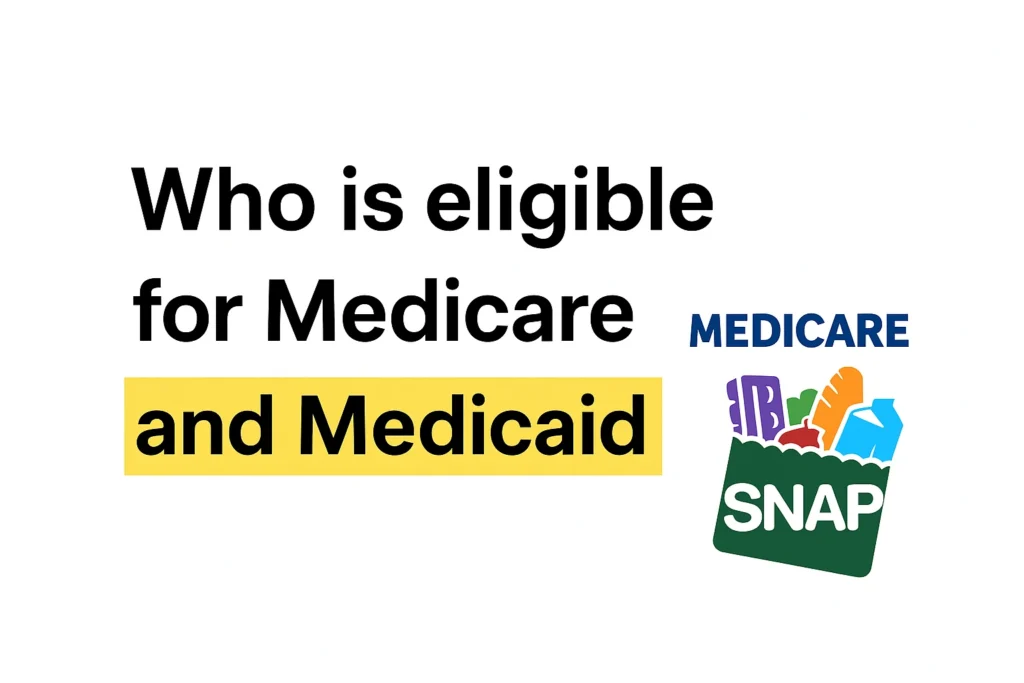You may have heard the names Medicare and Medicaid used together. They often protect the same person at the same time. This article explains what each program is, how they differ, whether you can have both, and who typically qualifies for dual coverage (often called “dual eligible”). Read the short sections below and use the links to check official rules for your state.
What is Medicare?
Medicare is a federal health insurance program for people 65 or older, younger people with certain disabilities, and people with End-Stage Renal Disease (ESRD) or ALS. Original Medicare has two main parts: Part A (hospital) and Part B (medical). Many people add drug coverage (Part D) or choose a private Medicare Advantage plan. Medicare rules and basic benefits are set at the federal level.
What is Medicaid?
Medicaid is a joint federal-state program that helps people with limited income and resources pay medical costs. States run their own Medicaid programs within federal rules, so who qualifies and which services are covered can vary by state. Medicaid often covers services Medicare does not cover well, such as long-term care and some personal care services.
What’s the difference between Medicare and Medicaid?
Medicare is largely an age- and disability-based federal insurance program. Medicaid is means-tested: it serves people who meet income and resource limits and is administered by states under federal guidelines. Medicare is uniform across the country for basic Parts A and B; Medicaid benefits and eligibility rules can differ from state to state. Coverage, cost-sharing, and who pays for what change depending on your status and your state.
Can you have Medicare and Medicaid at the same time?
Yes. People who qualify for both programs are called dual eligibles. Many dual eligibles are older adults or people with disabilities who meet Medicare’s age/disability rules and also meet their state’s Medicaid income/resource limits. Medicaid may pay Medicare premiums, deductibles, copays, and offer services Medicare does not cover.
Who is typically eligible for both (dual eligible)?
You may be dual eligible if you:
-
Are 65 or older (or disabled) and have low income and limited assets under your state’s Medicaid rules.
-
Receive Medicare because of disability and receive full Medicaid benefits.
-
Qualify for Medicare Savings Programs such as Qualified Medicare Beneficiary (QMB) or Specified Low-Income Medicare Beneficiary (SLMB), which can help with Medicare premiums and cost sharing.
States and federal rules create several dual-eligible categories; some people have full Medicaid benefits while others have partial assistance (for example, help with premiums only). Check your state’s Medicaid office for exact income and resource limits.
How dual coverage works in practice
If you have both programs, Medicare usually pays first for Medicare-covered services and Medicaid may pay remaining costs. States may enroll dual eligibles in special coordinated plans, such as Dual Eligible Special Needs Plans (D-SNPs) or Fully Integrated Dual-Eligible (FIDE) plans, to combine Medicare and Medicaid services through one managed care organization. These plans aim to reduce paperwork and coordinate care. Plan availability and rules vary by state and county.
Centers for Medicare & Medicaid Services (CMS) — role and where to look
CMS is the federal agency that runs Medicare, sets overall rules for Medicaid, and supports state coordination. Use CMS resources for official publications, guidance for dual eligibles, and links to state Medicaid agencies. Your state Medicaid website and Medicare.gov contain the practical enrollment links you will need.
How to check if you qualify — practical steps
-
Gather documents: proof of age or disability, income, and resources.
-
Check Medicare eligibility (turn 65 or have qualifying disability) at Medicare.gov.
-
Check your state Medicaid rules and income/resource limits at your state Medicaid website or Medicaid.gov.
-
If you already have Medicare and need help with premiums or cost sharing, ask about Medicare Savings Programs at your state Medicaid office.
Short FAQ
Q: If I have both, which card do I show?
A: Usually show your Medicare card for Medicare services and your state Medicaid ID for services Medicaid covers. Providers coordinate billing.
Q: Will Medicaid always pay for long-term care?
A: Medicaid widely covers long-term services and supports, but eligibility rules and coverage details differ by state.
Q: Are there special plans for dual eligibles?
A: Yes. D-SNPs and fully integrated plans help coordinate Medicare and Medicaid benefits. Plan availability varies by state.




